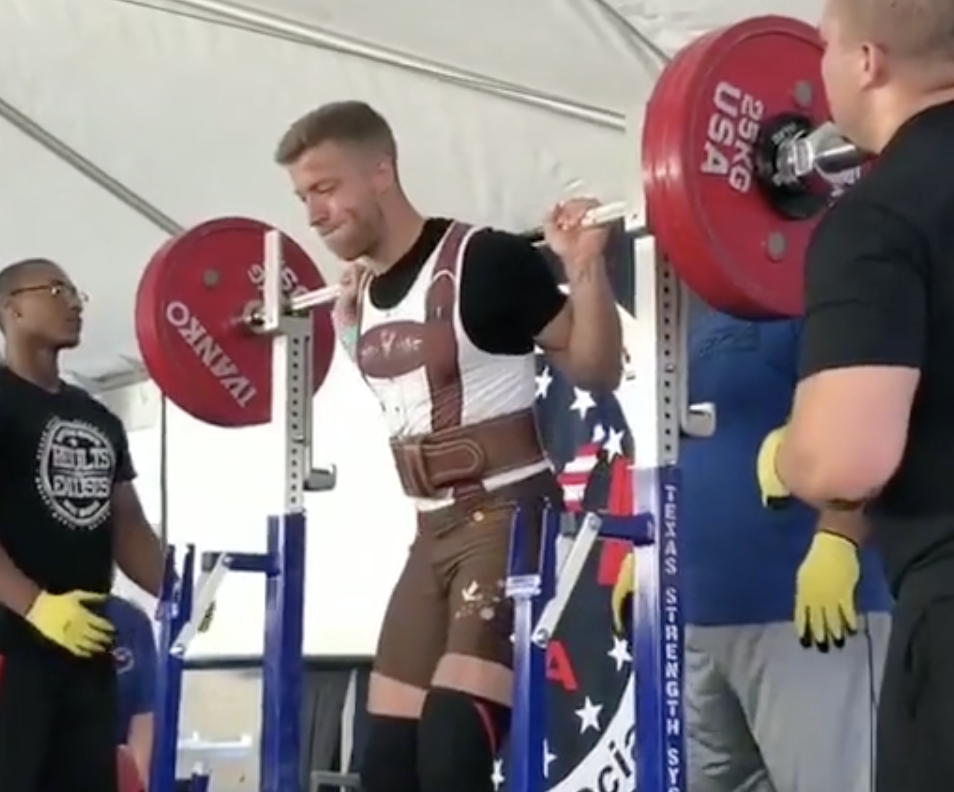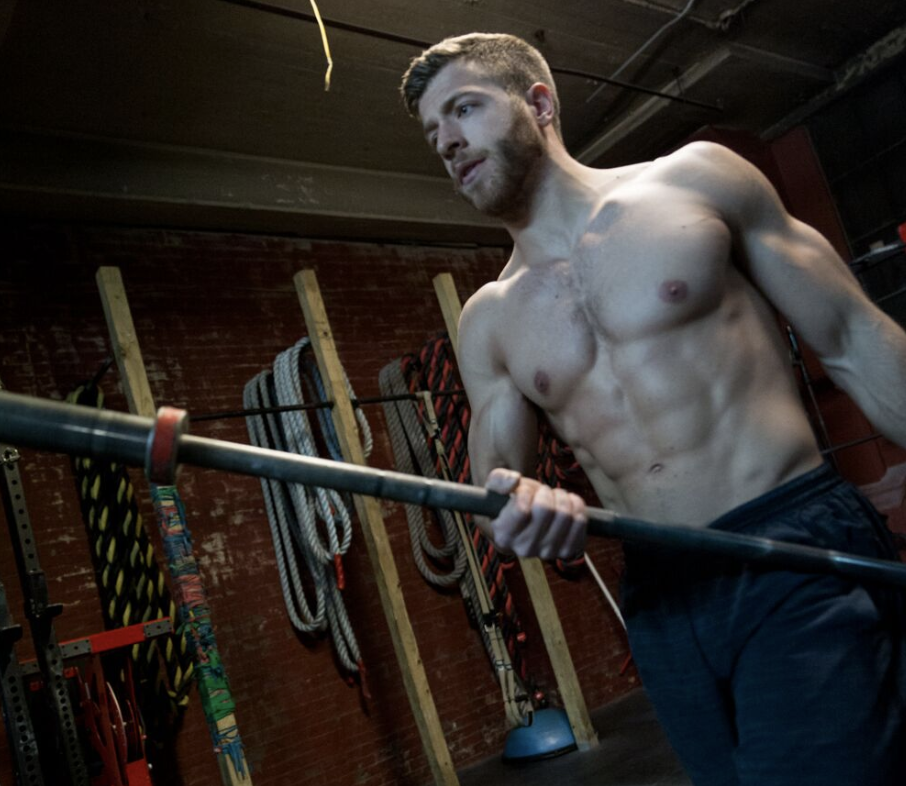I’m going to open up this article by letting everyone know that I’m not proactively saying ditch the barbell, or claiming one style training is always better than the other. That’s not at all the purpose of this piece, in fact, I love the barbell, and after my 8-week span of no barbell training our not so subtle reunion this weekend will be a glorious sight.
I’ve been barbell training over since I was 15, and formally training with a structured program since I was around 17. Now, I’m 26. After college at 22, I was set to compete in my first powerlifting meet (I was a college athlete and needed a new competitive outlet) when I had a quad rupture during a back squat 3-weeks out. Since that injury and rehab process, which seriously tested my limits to love the barbell and keep training, I’ve competed a few times and I’ve been training more differently than ever before.

Now, don’t get me wrong. I’m not by any means a world record holder, or special on the platform, but I’m okay pound-for-pound at local meets (inb4 you don’t even lift bro comments). All of this brings me to the topic of this article. After a decade of barbell training, I wanted to push myself to train two months without it. Here’s what I learned.
Author’s Note: Yes, 8-weeks isn’t really that long relative to lifelong training lessons, so I’m curious as to what experiences others may have learned from longer bouts of barbell-less training. If you have any, share them below in the comments!
Why Ditching the Barbell Is Scary
I think the biggest concern for most strength athletes who might consider ditching the barbell is the potential loss of strength, mass, and power towards specific movements (bench press, deadlift, squat, clean & jerk, etc.). But in many cases, I think most understand that strength and gains won’t disappear over night, but it is worrisome when you change something that you’ve been doing for so long.
The reality is this, if you’re at a higher level in a strength sport, then you’ll probably experience slightly more barbell specific drop off than others simply due to the lack of maintaining intensity and frequency. This obviously will come down to multiple individual factors and it’s unrealistic to provide a timeline or set of guidelines for you, but intensity and frequency matter, so a change in these could create a drop off to barbell specific movements.
The main point of this section is to make a case for dropping the acute idea that all progress will be lost instantly. Neural and muscular capabilities that we’ve built are not going to dissipate the moment we change up our training. Will they shift? Sure, but they’re not going to disappear. If anything, a change in training styles may form new connections that you may have been missing over the course of a long-term rigid style of training.
Author’s Note: I don’t recommend ditching the barbell if you’re in-season, wanting to compete in the near future, or just beginning structured barbell training (newb gains!).

1. Unilateral Work Is Your Best Friend
The first lesson I learned from ditching the barbell was how freaking great unilateral training is. Don’t get me wrong, I integrated a fair amount of unilateral training into my normal barbell workouts as accessories, but I’ve never really made them the focal points of a workout. For example, when was the last time you made your first focus of a lift on something like heavy split squats?
It turns out that I had a few imbalances that have built up over the years and after surgery, and it wasn’t until I really focused on heavy single-legged and armed loading that I really became painfully aware of them. Personally, I found that my left glute med was under-developed and that my left shoulder tracks a bit differently in both bench and should presses than my right.
Finding these out got me thinking about my sticking points in barbell movements, and how these two factors probably influence the power/shift out of the hole in my squat and why I miss-groove at times on heavier bench press reps.
Outside of those points, I’ve never experienced more mass gains on my shoulders and quads then I have over the last 8-weeks of using heavier unilateral training. This change in muscle growth is probably due to the change in stimulus, but it’s been an eye-opening experience at how powerful single-sided movements are.
Suggestions
- Ease into heavier unilateral movements with progressions. Split squat example: Flat footed, back foot barely elevated, back foot elevated slightly higher.
- If you don’t want to ditch the barbell completely, then try a fully focused unilateral day. Or try starting a normal training day with a single-arm/leg movement before moving to the barbell.
2. Movement Patterns Shift a Little
This point was probably the most shocking on this list. When you train certain movements for so long, it’s easy to fall into familiar patterns, and I’m aware of this. Yet, I had no idea how ditching a barbell would impact the way I moved in almost every facet of my life. In reality, this makes sense when you consider that even something like wearing a belt can shift barbell movement patterns, or how things can feel “off” some days when something minor is tight on our body, aka movement patterns are not always incredibly hard to shift.
For a real life example, I typically low-bar squat with some high-bar sprinkled in, so I naturally lean forward a bit more when doing squat movements, as I like to load my posterior chain more to support weight compared to my quads (long femur gang, what up!). After not using a barbell for 8-weeks I noticed that when I’d go to pick things up, walk up the stairs, or even stand up from the toilet my torso positioning was different.
Now, I’m not sure if this was from lack of low-bar squatting and deadlifting, but I noticed that my lower body movement patterns began to emulate something similar to what you’d see in a goblet squat. Rationally thinking. On my leg days, I did a ton of lunge, leg press, and goblet squat variations, so it makes sense that I’d naturally begin a flow into something similar to this more torso upright position.
I’m not here saying these new movement pattern differences are better than what I was experiencing before, but they definitely have me thinking about how fast we fall into certain patterns, and how these patterns can lead to blindspots in our training.
3. The Ego Will Rear Its Ugly Head
Another hard lesson that I had to face was swallowing my ego. It’s tough going to the gym and seeing your friends deadlifting heavy while you’ve sworn the barbell off for a training block. Let me tell you, the itch to compete and throw around weights is real if you decide to try barbell-less training for a bit.
Honestly, this was one of my favorite lessons learned and was a great test for my willpower. We see memes about this point all of the time (insert Kermit the Frog in the hoodie), “Coach has 5×6 programmed — max out instead”. Above all else, this lesson helped me fight the urge to go off my program/set training block’s goal, which is a serious skill for all strength athletes to practice, especially in the off-season.
Suggestions
- Remind yourself of the bigger picture. When I wanted to jump ship and rip a deadlift, I stopped and reminded myself of the goal, aka give this training style a fair test, see how I feel, recover, and write an article for others based off of what I learn.
- Load something heavy, or do something hard. To fuel your ego, go ahead and make one of your programmed movements heavier than normal or drop reps, or do a movement that’s freaking tough. For me, that’s single-leg RDLs. They challenge me and test my ego to improve them.
4. Programming Will Be Challenged
If you write your own programs, then get ready, because this style of training is going to be a fun and interesting challenge. How do you take out one of your main training modalities (the barbell) and still achieve the adaptations you’re aiming for. This lesson was fun because it flexed my idea of which variables in my program were most important.
For example, how could I manipulate a set of split squats to be at the same level of demanding as heavy back squat triples? Instead of simply grabbing dumbbells and plugging away with my programmed sets and reps, I started thinking more about things like tempo, progressions, set flow (supersets), and rest times.
[Want to build your own workout program? Check out our three step guide!]
These aspects above were things I use in my normal barbell training blocks, but I realized how important they can be when you don’t have the ability to load movements as heavy, but still need a particular adaptation (strength, power, etc). My guess, is that you won’t have a problem getting enough volume or frequency with barbell-less training, but high intensities may be tough at times to achieve.
Suggestion
- Change Tempos
- Couple Sets Together
- Try Things Like Cluster Sets
- Make Progressions Tougher
5. My Body Felt Better
Heavy strength training over time takes a toll on the body. I don’t think we need a long list of studies to tell us this either. We see jokes about it all the time on topics like, “I haven’t felt ‘good’ since I started powerlifting. Remember when my knees didn’t hurt? Me either.” These are jokes and extreme at times, but there’s some underlying truth there that should be addressed way more often.
The main lesson I learned from lack of barbell training is that I definitely need to spend more time on recovery when training heavier barbell movements frequently. I thought I did a lot already, but this lesson was humbling because my body literally feels better (ache-less) than it has in years. I don’t have aches in the morning, I’m not overly stiff throughout the day, and I feel more relaxed when both sedentary and active.
We talk about the benefits of recovery all the time and its relationship to longevity, but I don’t think as athletes we ever truly realize how important it is until we experience it. Long story short, this lesson taught me that what I thought was enough, was nowhere near enough, and it’s easy to be blinded by what’s normal to us. We shouldn’t chalk up frequent stiffness and pain as being “part of the game”.
Wrapping Up
One of the biggest takeaways that I’ve learned from these last two months of training is that while I’m the oldest I’ve ever been under the bar, I still feel like a complete newbie. I think that falls in-line with Albert Einstein’s popular saying, “The more I learn, the more I realize how much I don’t know.” For so long, I thought I was doing enough recovery and hitting all my weaknesses, but this taught me that there’s so much more out there that I need to test and try. The beauty of lifting.
These two months have been an awesome learning experience. They have definitely taught me multiple lessons that I’ll be bringing back to my next competition prep/training block.
Editor’s note: This article is an op-ed. The views expressed herein and in the video are the author’s and don’t necessarily reflect the views of BarBend. Claims, assertions, opinions, and quotes have been sourced exclusively by the author.